Mobilising Co-Design: The Role of the Charrette Cart in Transforming Homes
Author: Laura Brain, Research Associate, Cardiff University
The Charrette Cart
Central to the Design Research undertaken via the Transforming Home Project is a series of co-design workshops referred to as charrettes. Held with communities on 1920-40 estates across the UK, these play a key role in developing transferrable proposals for interwar social housing, allowing our team to co-design ideas with those who live in the homes and know them best.
The French ‘Charrette’ translates to ‘Cart’ in English. The word’s association with design reputedly stems from the Ecole des Beaux-Arts, the renowned school of architecture in Paris. There, wheeled ‘charrettes’ were used to collect students’ work on the day of submission – the culmination of intensive work to complete designs and drawings. Today, the term refers to “an intensive, hands-on workshop that brings people from different disciplines and backgrounds together (…) to explore design options for a particular area. It differs from a traditional community consultation process in that it is design based.” (Involve)
The Transforming Homes charrettes are highly interactive – participants explore and develop ideas about their homes through a process of physical modelmaking. There is a need to transport materials; to provide a point of focus during the workshop; and to collect and carry the models that participants create. These requirements lend themselves well to the idea of a travelling ‘Charrette Cart’: a vehicle to contain and collect materials, ideas and designs. Created by the Transforming Homes team, the cart plays key role in facilitating the charrette, encouraging resident participation and enabling ‘pop-up’ charrettes to be held anywhere.
Process: Design & Making
The cart was developed through a series of design sessions, with details refined in collaboration with staff from the physical workshop and digital laboratory at the Welsh School of Architecture (WSA). Drawings and models were created to explore and develop the design, along with small-scale prototypes to test details.
Several factors informed its design:
- Function: The cart was designed to facilitate the charrette activities. There is a removable drawer for each participant to use for the day and store their model. Other drawers hold ‘flatpack’ model templates, ‘bingo cards’ to help identify features of the homes, craft materials and modelmaking equipment. A large paper roll pulls out of one end for a ‘street’ based activity, and a board lifts to eye height to display A1 and A2 sheets and maps. The design also includes two demountable tables for exhibitions.
- Transport and manoeuvrability: The cart fits into a small van for easy transport across the country, and is sized to pass through standard doors, fit into lifts and navigate tight spaces in community centres and other venues.
- Interactivity: The cart was designed to be robust enough for participants to interact with it freely, encouraging engagement and a sense of theatre through moving parts.
- Material use and efficiency: The cart was built primarily from bio-based materials, with potential for deconstruction or reconfiguration, using mechanical fixings instead of glue at key joints. Its dimensions align with standard plywood sheet sizes to minimise waste.
- Flexible use / adaptability: While the current setup supports the charrettes, the cart can take on new roles as the project evolves – such as a mobile exhibition or a tool for facilitating future workshops or in-person events.

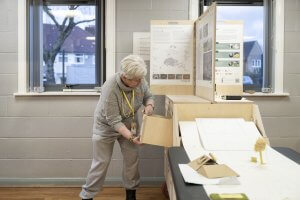
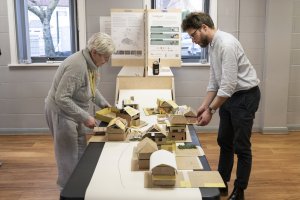
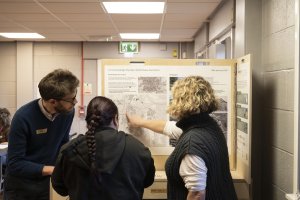 Credits: Francesca Jones
Credits: Francesca Jones
The cart was built in the WSA workshop at the end of 2024, with support from the school’s technical staff. Whilst certain details were adapted during construction, the original design was largely adhered to, and the cart was completed just in time to set off around the UK in early 2025.
Reflection / Future
The cart has proven popular with charrette participants and the TH consortium alike. We are keen to test and refine the concept as the project grows and builds momentum. Taking this first iteration as a prototype: how can it perform better? How could material efficiency be improved? Could the design be scaled and distributed as a resource for others planning co-design activities? Through real-world testing, we can confront these questions and unlock the full potential of the Charrette Cart within and beyond Transforming Homes.
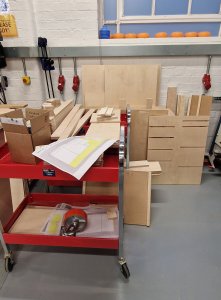
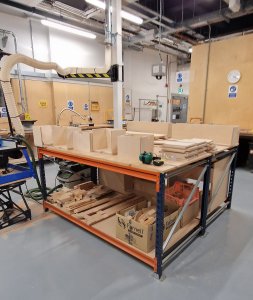

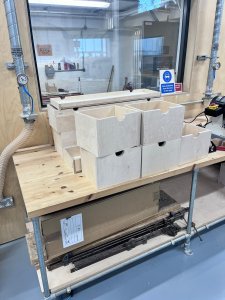 Credits: 1-2 Jo Patterson, 3-4 Veronica Albarran Carrillo
Credits: 1-2 Jo Patterson, 3-4 Veronica Albarran Carrillo
